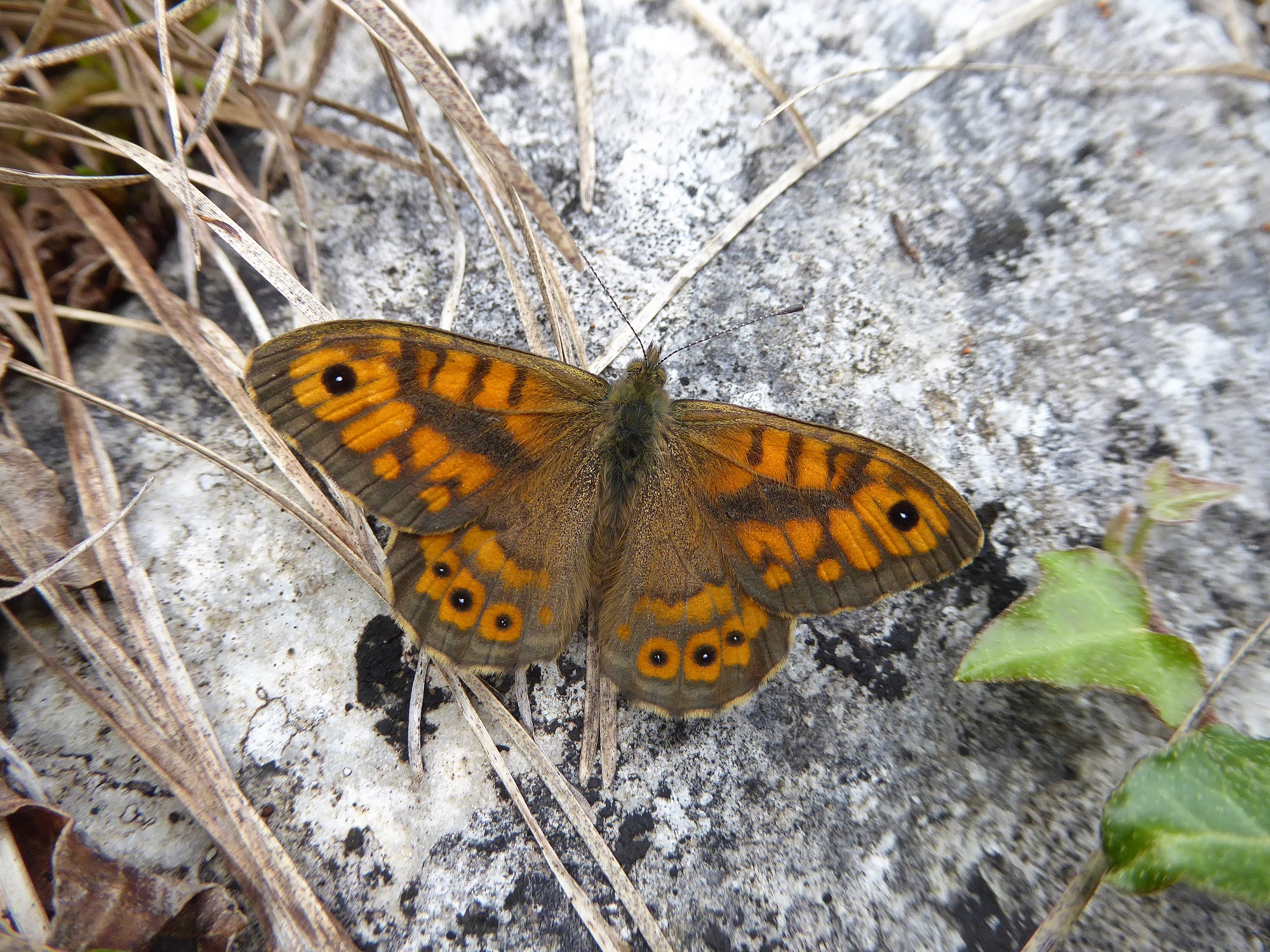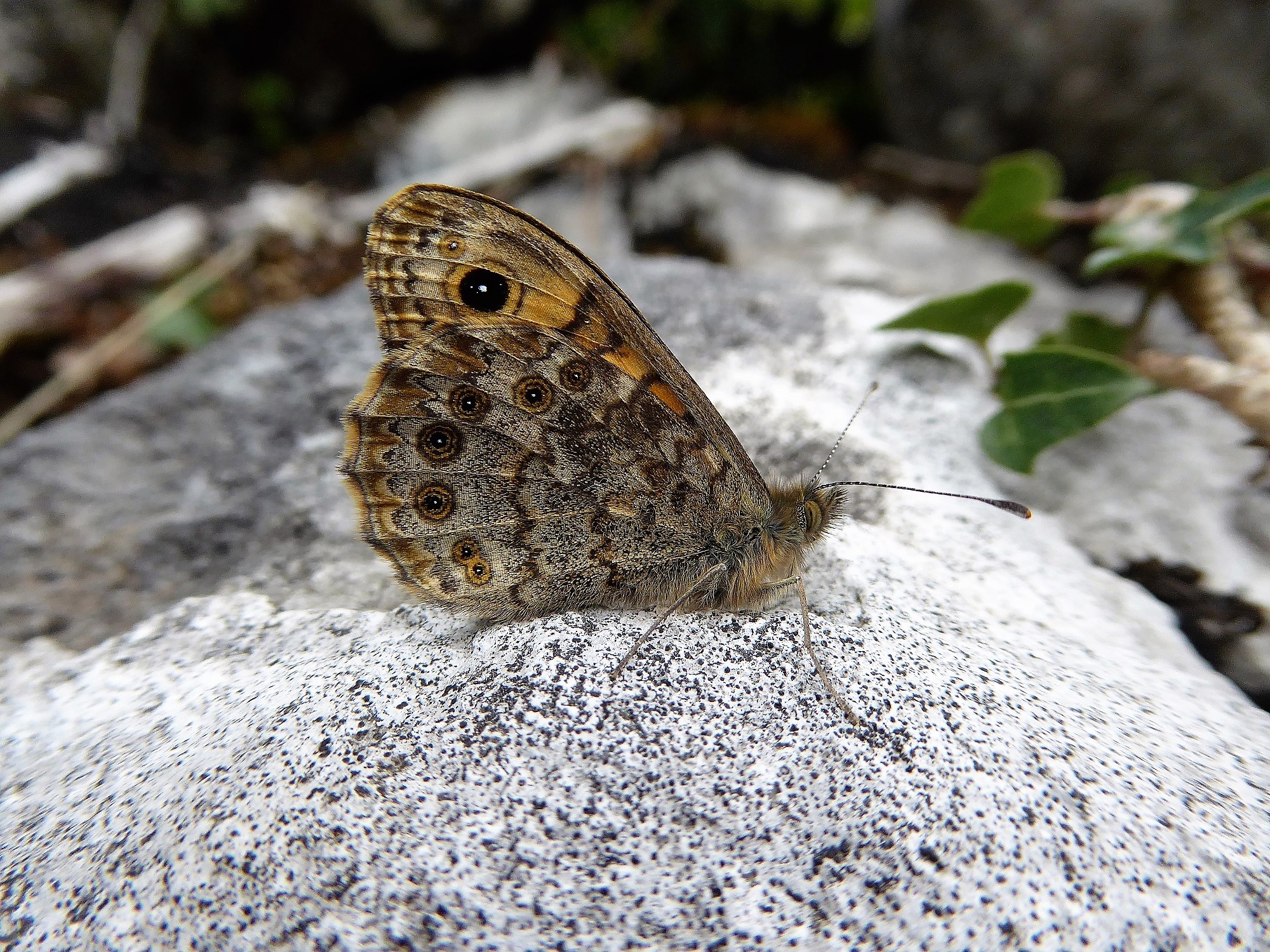August 2018 has returned to us the more typical Irish summer conditions but the heat earlier in the summer means that there are high numbers of butterflies flying now, which developed quickly in the warm weather that prevailed during the immature life stages. One very important butterfly flying now and during September is the Wall Brown, a butterfly that has seen a marked decline in distribution and range in Ireland since the mid-1980’s. Before the mid-1980’s it was found throughout Ireland in the general countryside but is now mainly restricted to the most free-draining, driest, thinly-vegetated areas such as sand and gravel quarries (probably also found in dimension stone and aggregate stone quarries ), sand dunes, dry coastal heaths, rocky areas such as limestone pavement, dry limestone and acid grassland and the driest areas of cutover bogs. It is absent from many areas inland that it occupied in the past, such as along tracks worn to bare earth on farmland, dry hedge banks and lanes and at the edge of country roads edged by stone walls. It is feared extinct in Northern Ireland where it was last recorded at a coastal site in County Down in 2015. It remains numerous in County Donegal, where, according to excellent recorders, there has been no decline.
The Wall Brown may return to the broader countryside as it is a mobile butterfly and can fly great distances when the urge to move exists. We include two photographs of this lovely butterfly. It is often seen in low numbers but occasionally a dozen or more will be seen concentrated in an area of suitable habitat. It is a sun-loving butterfly. Males are eye-catching. If you see one, he will usually be seen flying low ahead of you, landing periodically to bask against bare surfaces. It holds its wings in a shallow V as it flies. After flying along a track or a stone wall for many metres, it will often turn and fly back, pausing to bask briefly before resuming its patrol. When direct sunlight is dimmed by cloud, the butterfly lands and basks briefly before closing its wings. It is only then that a close approach is usually possible. The female looks similar but is paler overall and does not have the dark brown diagonal band across the upper side of the forewing. Note the presence of white-pupils on black eye-spots. The presence of eye-spots shows its membership of the Satyridae or the “Browns” (regarded by taxonomists as a subfamily of Nymphalidae which includes the fritillaries and vanessids). Other members of the subfamily Satyridae include the Meadow Brown and Speckled Wood.
The Wall Brown shows a similar decline in Britain. It is presumed extinct in Surrey, for example, a southern county that holds many sites containing apparently suitable habitats. Box Hill was one of the last Surrey sites it survived on, and the site continues to hold well-drained, sparsely vegetated grassland one associates with the butterfly. It is the mystery of its decline that adds to the alarm as we have no idea what measures are needed to help it to recover. If you see one on your walk along a country road, on your ramble through flower-rich sand dunes, a cliff walk or anywhere else please let us know, according to the details we need for a valid record; for what is needed please check our website here: https://butterflyconservation.ie/wp/records/



